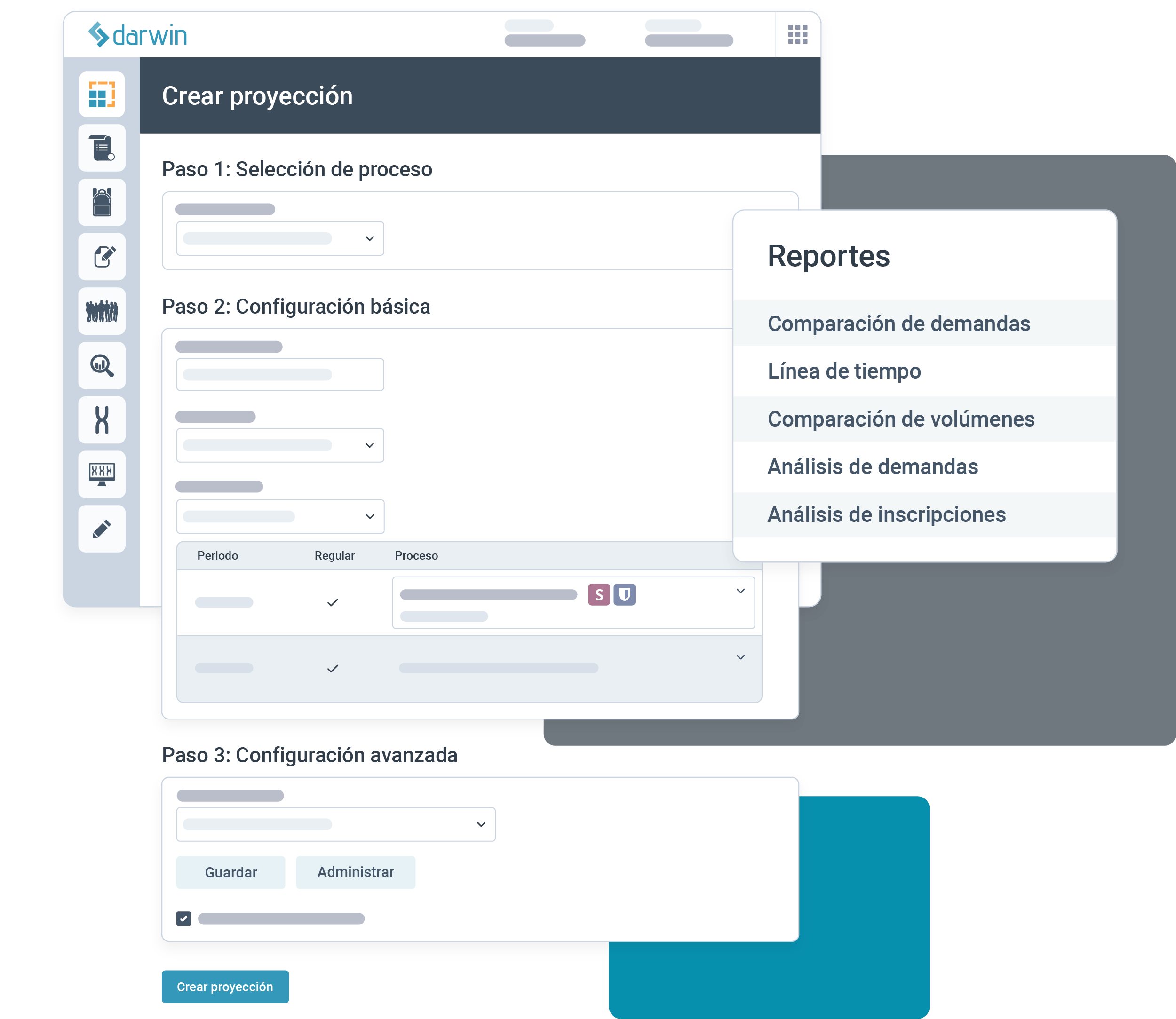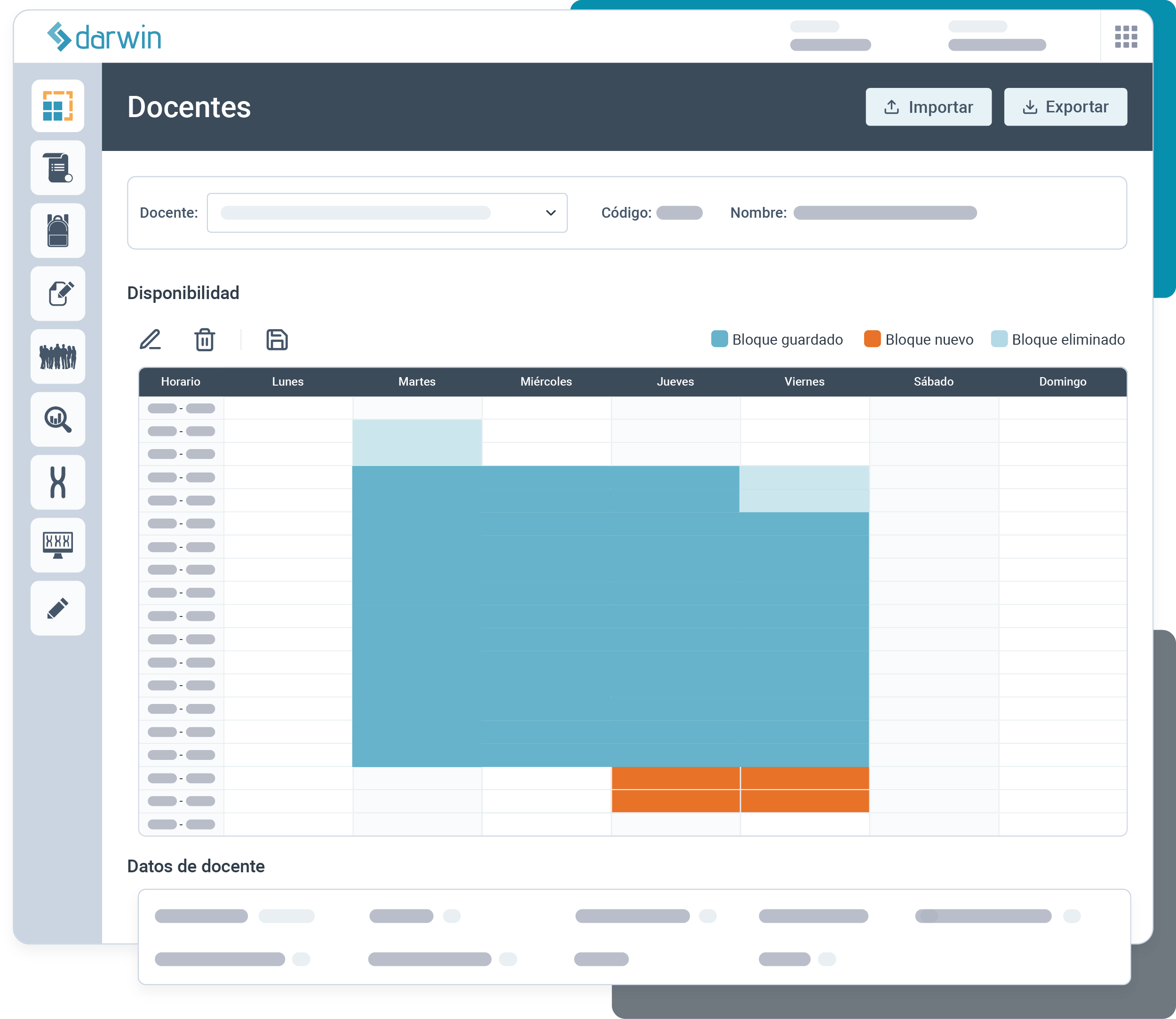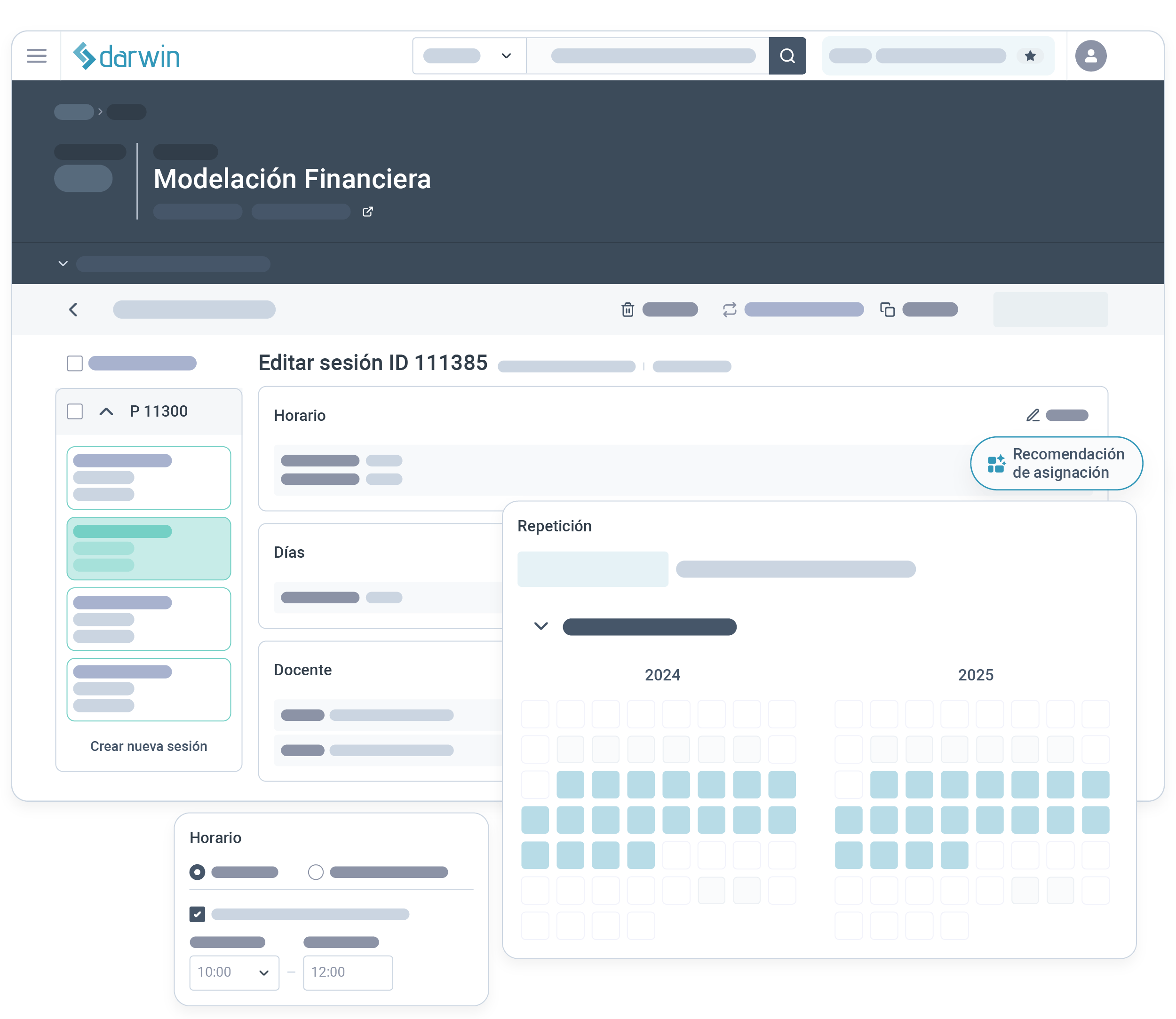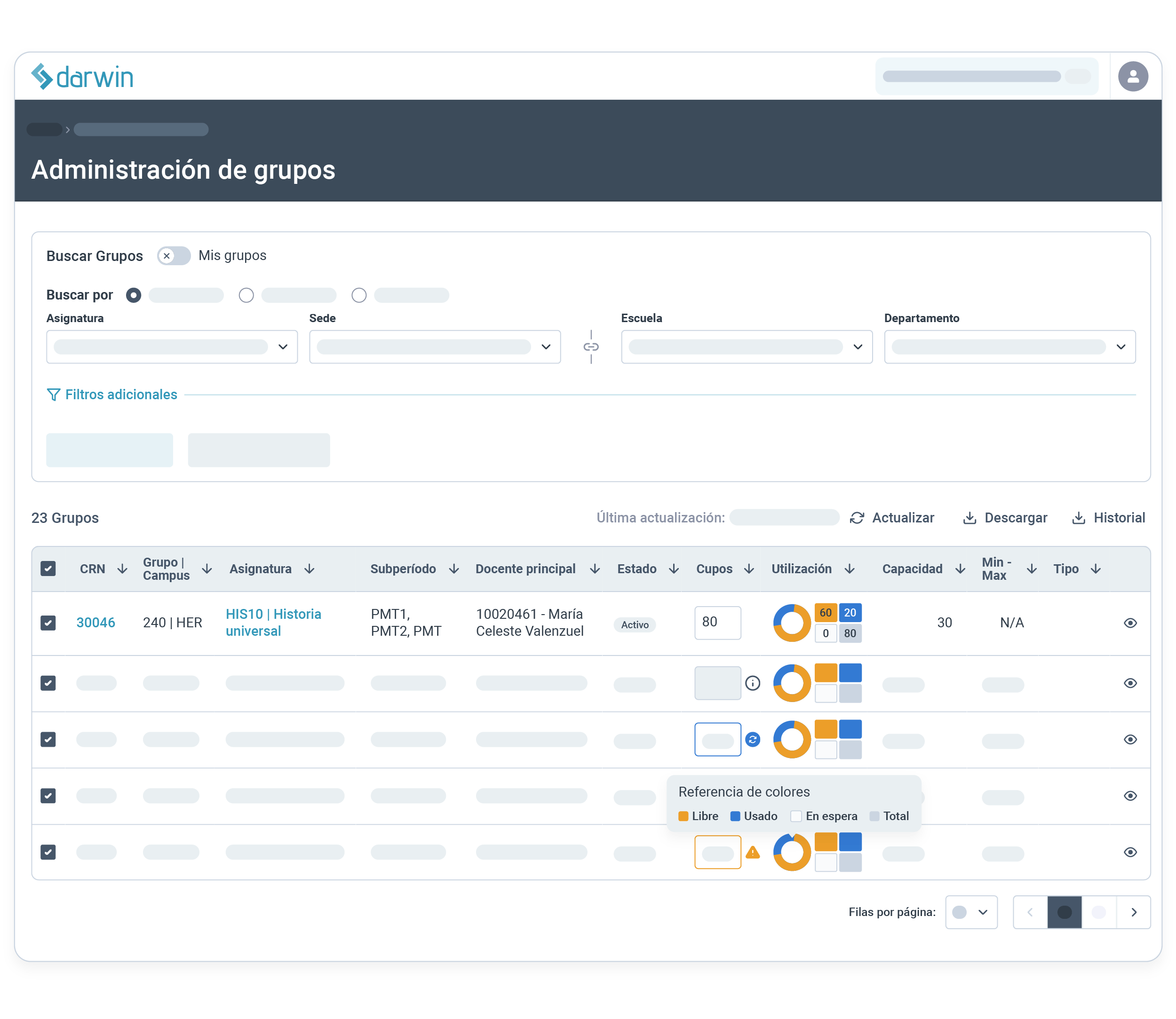
Budget savings and quality assurance
You can accurately estimate the demands and ensure the offering of groups optimizing budgets and ensuring student’s experience.
Automates end to end process with AI, using resources efficiently (classrooms, teachers, etc.) to build quality collaborative schedules.
Considers university’s community interests to build an academic planning that efficiently resolves the multiple needs and expectations, with process efficiency and effective results.

Accurate estimation and collaborative review of the number of students expected to be enrolled in each course.
Simulate your students' enrollment to estimate groups demand by course, according to the rules of each academic unit. Additionally, you'll be able to automate the process and control the budget, as well as:

Automates and efficiently uses academic resources to build high-quality collaborative schedules.
You can automatically and optimally build group offerings, including schedules, teacher and classroom allocations, based on university rules and programs, as well as student characterization. Additionally, you'll be able to:

You can efficiently edit the academic planning, with automated validations to improve the operational management.
You'll efficiently navigate, review and edit schedules and group allocations, facilitating collaboration among process related areas. You can also:

Ensures a successful planning process together with adequate student progress, to enjoy a high-quality educational experience.
Administer group quotas during enrollment with interfaces, allowing bulk changes and automated validations as per established rules. All changes made are recorded for historical tracking purposes! You'll also be able to:

Enjoy the peace of mind with seamless, scalable, modern and secure services supported by the best technologies, tailored to your institutional needs.
Compliance with highest industry security standards, handling your data with the utmost protection.

Technology that redefines academic management.

Budget savings and quality assurance
You can accurately estimate the demands and ensure the offering of groups optimizing budgets and ensuring student’s experience.

Flexibility for institutional rules
You can automatically enforce compliance with guidelines of your educational model in academic planning.

Promoting a collaborative work
You can implement efficient and collaborative processes for academic plannings’ management and maintenance.

AI engines connected to user interface modules, integrated to the digital ecosystem.
Infrastructure designed to fully exploit the capabilities of cloud computing.
High availability enrollment service, managed and supported by Foris.
AWS Cloud Architects; partnership since 2017.
Please contact our team, to learn more about our solutions.